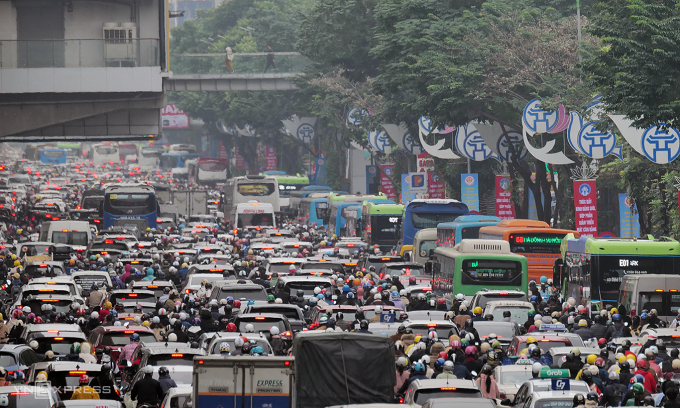Hanoi to restrict polluting vehicles in populated areas starting 2025
Le Thanh Nam, director of the city’s Department of Natural Resources and Environment, on Monday said Hanoi, with its 17 industrial complexes, 1,300 craft villages and 8 million motorbikes and cars, consumes approximately 80 million kWh of electricity and millions of liters of gasoline daily.
“This is one of many causes of air pollution,” Nam said, explaining that the city is implementing certain main solutions to address the issue: cleaning up lakes and rivers, expanding automatic air and water quality monitoring systems, utilizing green energy, developing smart cities and traffic systems, and creating more green spaces in urban areas.
Starting in 2025, low-emission zones will be trialed in air pollution hotspots, where high-polluting vehicles will be restricted. Nam added that routes exclusively for electric buses and low-emission vehicles may also be developed, alongside the expansion of public transport options.
Nguyen Phi Thuong, director of Hanoi’s Department of Transport, highlighted the city’s growing traffic problem. Of the 8 million vehicles, 1.2 million are cars, with personal vehicle numbers rising by 4-5% annually, and cars by 10% each year. In contrast, the city’s infrastructure grows by only 0.28% annually.
Hanoi’s land allocated for traffic is currently 12%, below the target of at least 16%. This shortfall leads to vehicles exceeding road capacity, contributing to the city’s 33 traffic congestion hotspots, Thuong said.
Investing in urban railways has been proposed as a solution. While Hanoi initially planned for 10 railway routes spanning 417 km, this has been revised to 14 routes totaling 600 km. However, construction could take 15-20 years and cost around $100 million per kilometer, translating to an estimated $50 billion for 600 km, Thuong noted.
The city’s statistics indicate that Hanoi’s PM2.5 levels from 2018-2020 were double the national standard of 25 µg per cubic meter. Transportation is the largest contributor, accounting for 50-70% of PM2.5 emissions.


Comments are closed.